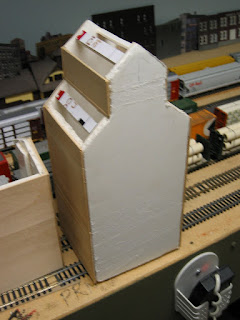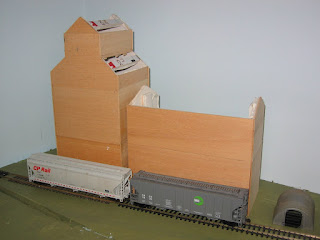 SW9 7400 switches a car in the Fort Frances yard.
SW9 7400 switches a car in the Fort Frances yard.
I have a confession to make: I don’t really like operations.
I have operated on friend’s layouts. It’s OK. But moving car A from industry B to yard track C has never really intrigued or intereseted me. Juggling a stack of car cards has never been that appealing, either.
I tried to make my first layout operations-oriented. I had a card for each car (colour-coded by type), a timetable, even a John Allen-like timesaver industrial area. But it always ended up that I’d rather just run trains.
When I built the CP Rail Manitoba & Subdivision, I decided not to worry about operations. Which isn’t the same as saying the layout can’t be operated—it can. But the goal isn’t switching individual cars; rather, it’s the movement of trains across the layout.
The layout is set up to represent the coming together of two lines into one line (like a Y). One line of the two lines goes east to Thunder Bay; the other goes south to Duluth, MN. They join in Fort Frances, Ont., where a single track goes west to Winnipeg. (This is the real-life route of CN’s former Duluth, Winnipeg & Pacific line, still in operation today.)
At Fort Frances, cars from the three destinations are taken off trains and added to them. Trains are blocked so that the cars that need to be removed or added are at the rear of each consist. I use a version of Jim Heidiger’s wheel report system to keep things moving: Operators are instructed to take off or add X number of cars from each train as it enters the yard. Cars taken off of trains can be put into any yard track they want. Operators can also take off as many or as few cars if they want, too—it doesn’t matter.
I also have an interchange at Nance, MN with the Peace River Northern (PNR). Cars for the PNR are dropped off at the interchange track for the various industries in Nance and beyond. After dropping off the cars for the PNR, the local picks up the cars headed back to Fort Frances and takes them back to the yard. The next time around, those same cars are taken back to Nance and dropped off at the interchange. The cars dropped off on the previous trip are taken back to Fort Frances—and so the cycle repeats itself.
In fact, no cars ever actually gets switched at an industry, yet it seems like there is lots of action. Simple, eh?
In fact, simplicity is my goal when it comes to operations. My approach isn’t for everyone; some purists, I’m sure, would be aghast. But it works for me.


























